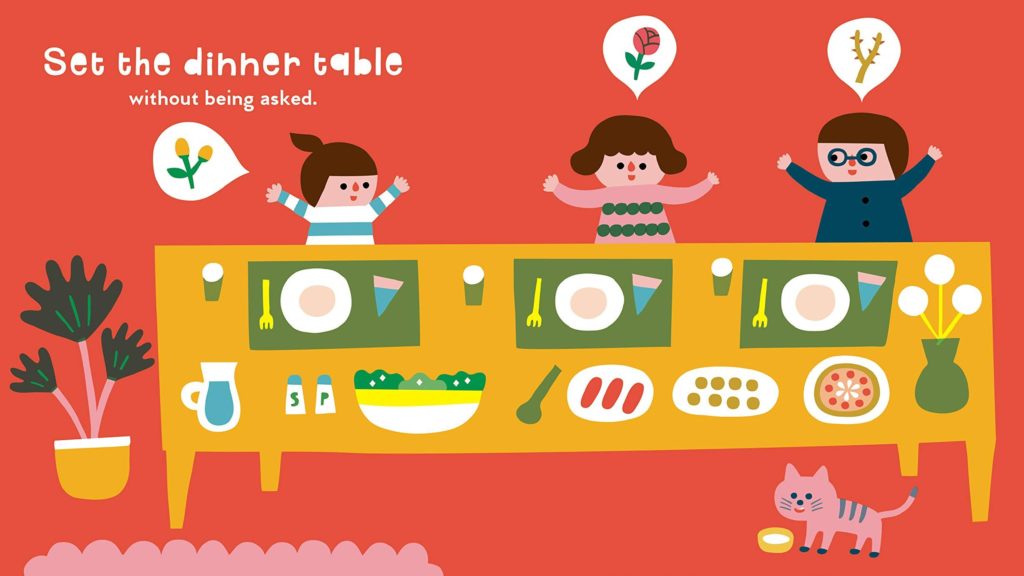“Nice people made the best Nazis. My mom grew up next to them. They got along, refused to make waves, looked the other way when things got ugly and focused on happier things than “politics.” They were lovely people who turned their heads as their neighbors were dragged away. You know who weren’t nice people? Resisters.”
Naomi Shulman
Author Naomi Shulman is most likely familiar to you from the facebook post heard round the world: A stunning, one-paragraph indictment of political neutrality in the wake of the 2016 election. Like you, I’ve heard this quote (or parts of it) repeated as a kind of mantra. It startles us out of complacency. It decidedly makes us uncomfortable, but in the best way possible.
Her newest project is a book for children about being kind. But as one would expect, Be Kind: You Can Make the World a Happier Place! 125 Kind Things to Say and Do is a treatise to remind children and their adults that kindness can be about being “nice,” but niceness isn’t what is at the core.
Outside Voice: First of all, you’re really well known for your quote about “nice” people being the best Nazis. I think often in America, we equate “nice” with “kind” and “good.” It seems like we’re culturally coming to a reckoning with this idea that American politeness and “getting along” can actually be destructive. Is that the way you see it?
Naomi Shulman: Yes, absolutely. The distinction between nice and kind is an important one. Sometimes the kindest thing to do is something that may not look or feel nice, and sometimes we learn that the hard way. I consider how hard it can be for some of us to speak up even in low-stakes situations — if we overhear an offensive joke, for example. It can feel not-nice to call someone else out. But it is kinder to confront. I do think Americans are beginning to reckon with hard truths that we have historically felt were not “nice” to talk about. It’s not easy.
OV: How are you framing or reframing the idea of kindness for kids today?
NS: I place kindness in the bigger picture of social justice. When I was writing the book, I was inspired by specific Jewish values that are really universal values, among them welcoming the stranger, helping those less fortunate, caring for sick people, taking care of animals and the earth. These values are universal because they are the underpinnings of a healthy, functioning society — they remind people to look out for each other. Kids understand them quickly, and in my experience, they like knowing that they can do things that are meaningful and make a real difference. Most of the ideas in this book are about making your community better — whether it’s your household, your school, your neighborhood, or your planet. Kindness is something we put into action along with those around us.
OV: There’s often this kind of second or shadow audience for most children’s books: if they’re being read aloud, it’s the parent or teacher or someone else. What do you think adults will get out of the book?
NS: When I was parenting little kids, I loved getting ideas of things to do, so I tried to include lots of activities that I might have wanted to do with my girls — making homemade bubble solution, for example, or a pinecone birdfeeder. But I also hope the book sparks some important conversations. Reading aloud to children is often a very intimate experience. Kids are often getting ready for bed; sometimes they are already IN bed. That period of winding-down can be a contemplative time, and some of the most memorable talks I’ve had with kids have happened then. I hope that’s true for parents reading this book, too.

OV: I love the illustrations I’ve seen. What was it like working with Hsinping Pan? The illustrations seem to harken back visually to books from my own childhood in the 70’s. What do you think that visual language does to the messages that you are trying to send in the book?
NS: I so love Hsinping Pan‘s artwork! One of the things I love about it is while it’s very accessible to young children, it also winks to older kids and adults. There’s a gentle humor in it, which I had hoped would come through in my text, too. And yes, there’s a timelessness to it.
OV: Finally, is there a particular page or anecdote which you’d like to share either why it’s special to you or how it came about?
NS: I think my favorite suggestion is to leave a bookmark with a note in a library book. I was a huge reader as a child, and sometimes found that books were more reliable friends than my classmates were. The idea of one bookworm leaving a message for another just speaks to the introvert in me — a bit of deep kindness for the shy kids among us.
***
And in today’s world, the kind gesture– from one shy kid to another, from one human to another, is a deeply spiritual practice that just might help us revive our common bonds. We’re all here together. It’s best we start (in the best way) acting like it.

This article contains affiliate links. By purchasing through these links, Outside Voice will receive a small renumeration, which we use to pay our writers and to give directly to the campaigns of Black women running for political office.

